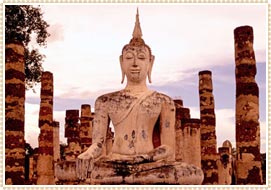
Just
a short walk from the Durbar Square, lies the Maha Buddha Stupa that is
also known as Mahabuddha Temple. This is the only major Stupa in Nepal
that does not have Nepalese influence in its architecture. The design of
the Maha Buddha Stupa is based on the Indian style Sikhara temples that
are primarily built of brick. This Stupa was built during the reign of
King Mahendra Malla and the year of its construction can be safely
placed around1585 A.D.
It is said that Jivaraja, who was a Buddhist devotee, was the brain
behind the construction of this Stupa. Jivaraja belonged to Bodh Gaya,
the place that enlightened Buddha. On his journey to Nepal, he conceived
an idea to build the replica of the famous Bodh Gaya temple on a
relatively smaller scale. His design differs considerably from the
original, however.
This monument may be said to be purely Indian in design and thus a
rarity in Nepal. The details in its modeling and decoration are very
Indian in nature. The Stupa is sometimes known as the, "Temple of
One Thousand Buddha" because of the thousands of images of Gautam
Buddha that have been painted on its inner walls. These images portray
the various stages of the life of Buddha. This style, too, has been
borrowed from India. The only dampener in the whole construction is the
cramp courtyard that encloses the temple. It is so small that the viewer
is forced to view the temple from a very close range. The effort strains
the eye. The warm golden-red color of the brick stands out sharply
against the blue sky on a clear sunny morning. You will also be
attracted by a certain exuberance, especially in the larger figures,
which gives the temple a note of excitement and movement. Another
striking point is the images of Apsaras, Kings and Demons that add an
aura of immediate life to this temple. This particular feature is
missing from nearly all the pagodas in Nepal and Tibet.
Maha Buddha is marked by several door and windows openings along its
considerable height. They allow ample light in otherwise cramped
structure. Although the temple appears to be quite neglected by the
public on any average day and the lamps appear to be rarely lighted, it
comes to life once a year when scores of devotee come to celebrate the
birth of Buddha.


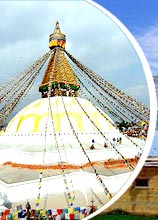
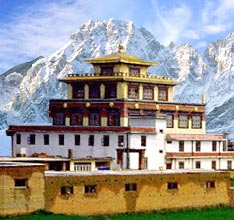
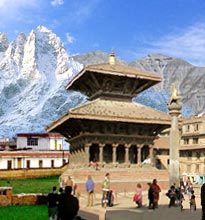
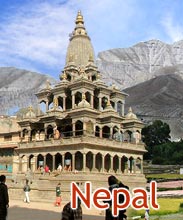
 Just
a short walk from the Durbar Square, lies the Maha Buddha Stupa that is
also known as Mahabuddha Temple. This is the only major Stupa in Nepal
that does not have Nepalese influence in its architecture. The design of
the Maha Buddha Stupa is based on the Indian style Sikhara temples that
are primarily built of brick. This Stupa was built during the reign of
King Mahendra Malla and the year of its construction can be safely
placed around1585 A.D.
Just
a short walk from the Durbar Square, lies the Maha Buddha Stupa that is
also known as Mahabuddha Temple. This is the only major Stupa in Nepal
that does not have Nepalese influence in its architecture. The design of
the Maha Buddha Stupa is based on the Indian style Sikhara temples that
are primarily built of brick. This Stupa was built during the reign of
King Mahendra Malla and the year of its construction can be safely
placed around1585 A.D.  Taj Mahal Tour
Taj Mahal Tour Rajasthan Tours
Rajasthan Tours Kerala Tours
Kerala Tours Kashmir Tours
Kashmir Tours Tamilnadu Tours
Tamilnadu Tours Adventure Tours India
Adventure Tours India Beach Tours India
Beach Tours India Desert Tours India
Desert Tours India Pilgrimage Tours India
Pilgrimage Tours India Ayurveda Tours India
Ayurveda Tours India Buddhist Tours India
Buddhist Tours India Temple
Tours India
Temple
Tours India Sculpture Tours India
Sculpture Tours India Golden Triangle Tour
Golden Triangle Tour India Heritage Tours
India Heritage Tours Hill Tours India
Hill Tours India Honeymoon Tours India
Honeymoon Tours India Kerala Backwaters Tour
Kerala Backwaters Tour India Train Tours
India Train Tours Trekking Tours India
Trekking Tours India India Wildlife Tours
India Wildlife Tours Karnataka Tour
Karnataka Tour Nepal Tour
Nepal Tour Orissa Tour
Orissa Tour Gujarat Tour
Gujarat Tour Andhra Pradesh Tour
Andhra Pradesh Tour Maharashtra Tour
Maharashtra Tour Chardham Tour
Chardham Tour  Golden Chariot
Golden Chariot Himachal Pradesh Tour
Himachal Pradesh Tour Sikkim Tour
Sikkim Tour Madhya Pradesh Tour
Madhya Pradesh Tour